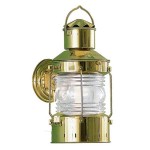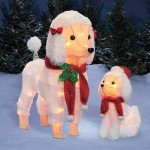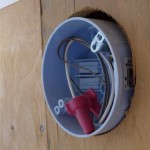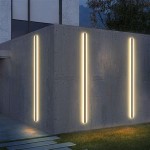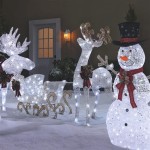How to Choose Outdoor Soffit Lighting
Soffit lighting, positioned under the eaves of your home, provides a subtle yet effective way to illuminate your exterior. It enhances curb appeal, improves safety, and adds ambiance to your outdoor spaces. However, with a variety of styles, sizes, and technologies available, choosing the right soffit lighting can be overwhelming. This guide provides a comprehensive approach to selecting the perfect outdoor soffit lighting for your home.
1. Determine Your Lighting Needs
Before diving into specific lighting types, it's crucial to define your primary objectives for outdoor soffit lighting. Consider the following factors:
- Security: Do you want the lighting to deter potential intruders? Bright, motion-activated fixtures can provide an effective deterrent.
- Ambiance: Are you aiming for a cozy or inviting atmosphere? Warm-white LED lights can create a welcoming ambiance.
- Functionality: Will the soffit lights serve as a primary source of illumination for specific areas, like a patio or walkway? Consider brighter fixtures with wider beam angles for these purposes.
- Style: Do you want the lighting to blend seamlessly with your home’s architectural style, or make a statement? Choose fixtures that complement your existing design aesthetic.
2. Explore Lighting Styles and Technologies
Once you have a clear understanding of your lighting needs, you can narrow down your choices based on style and technology:
Types of Soffit Lighting
- Recessed Lights: These unobtrusive fixtures are mounted flush with the soffit, creating a clean, minimalist aesthetic. Recessed lights are often preferred for their contemporary and modern appeal.
- Surface-Mount Lights: Surface-mount fixtures are attached directly to the soffit, providing a straightforward and cost-effective installation option. They offer versatility in style and are suitable for various architectural styles.
- Linear Lights: Linear lights, available in long, narrow strips, are ideal for illuminating large areas of soffit space and creating a continuous line of light. They are commonly used to highlight architectural features.
Lighting Technologies
- Halogen: Halogen bulbs provide a bright, warm light but are less energy-efficient than other options. They are typically the most affordable choice.
- Incandescent: Incandescent bulbs offer a classic warm glow but are energy-inefficient and have a shorter lifespan compared to other technologies.
- LED: LED bulbs are highly energy-efficient, durable, and have a long lifespan. They are available in various color temperatures, from warm white to cool white, to achieve the desired ambiance.
- Fluorescent: Fluorescent bulbs are also energy-efficient, but they can be bulky and may not be suitable for all soffit applications. They are typically preferred for commercial and industrial settings.
3. Consider Additional Features and Considerations
Beyond the essential aspects of style and technology, several additional features are important to consider for your outdoor soffit lighting:
Brightness and Color Temperature
The brightness of your soffit lighting is measured in lumens. For general illumination, aim for a lumen range of 500-1000 lumens per fixture. Color temperature, measured in Kelvin (K), determines the light’s warmth or coolness.
- Warm White (2700-3000K): Creates a cozy ambiance, perfect for relaxing outdoor spaces.
- Neutral White (3000-4000K): Offers a balanced light that is ideal for most applications.
- Cool White (4000-6500K): Produces a bright, clean light, suitable for security purposes or highlighting specific areas.
Motion Sensors
Motion sensors are a convenient and energy-saving feature for outdoor lighting. They activate the lights only when motion is detected, conserving energy and improving security.
Dimmers
Dimmers allow you to adjust the brightness of your soffit lights, creating different moods and atmospheres. They are particularly useful for achieving a cozy ambiance in the evening.
Weatherproofing
Outdoor lighting should be weatherproofed to withstand the elements. Look for fixtures with an Ingress Protection (IP) rating of at least IP65, indicating resistance to dust and water.
Choosing the right outdoor soffit lighting requires careful consideration of factors like lighting needs, style, technology, and additional features. By following this guide, you can make informed decisions and select fixtures that enhance the functionality, safety, and aesthetics of your home’s exterior.

Illuminate Your Home S Facade With Outdoor Soffit Lighting In St Louis

Exterior Recessed Soffit Lighting Aspectled

Soffit Lighting Jellyfish

Recessed Soffit Lights Why Up Lighting Is The Better Alternative Landscape Pro

Outdoor Led Soffit Lighting Astoria Co

Soffit Lighting Installing Outdoor Recessed Lights

Illuminate Your Home S Facade With Outdoor Soffit Lighting In St Louis

8 Soffit Lighting Ideas For Exterior Perfection Dekor

Recessed Soffit Lights Why Up Lighting Is The Better Alternative Landscape Pro

Guide To Choosing The Right Recessed Light Fixtures For Your Home Exterior
Related Posts

